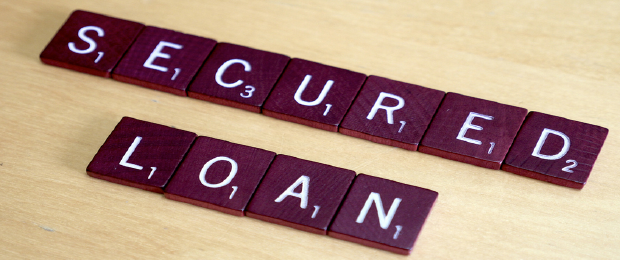Introduction
In the world of personal finance, loans are often an essential tool to manage life events, grow businesses, or consolidate debt. Among the various types of loans available, secured loans stand out due to their unique requirement: collateral. Whether it’s a home, car, or savings account, secured loans are backed by assets and often come with favorable terms. But the question remains: Is a secured loan the right choice for you? This comprehensive guide will walk you through what secured loans are, how they work, and the benefits and risks involved, helping you make an informed decision.
Key Takeaways:
- A secured loan is backed by collateral such as a home or car.
- It typically offers lower interest rates and higher borrowing limits.
- Risk of losing your asset is real if you default on payments.
- Ideal for people needing large loan amounts or with poor credit history.
- Evaluate repayment ability before choosing this loan type.
- Always compare loan options and understand all terms before signing.
What Is a Secured Loan?
A secured loan is a type of loan that is protected by an asset or collateral. If the borrower fails to repay the loan, the lender has the legal right to seize the asset to recover the loan amount. Common types of secured loans include:
- Home loans (mortgages)
- Auto loans
- Secured personal loans
- Home equity loans
- Title loans
The presence of collateral reduces the lender’s risk, allowing them to offer more favorable interest rates and higher borrowing limits compared to unsecured loans.
How Does a Secured Loan Work?
Here’s a step-by-step breakdown of how secured loans typically work:
- Application: You apply for a loan and offer an asset as collateral.
- Evaluation: The lender evaluates the value of the collateral and your creditworthiness.
- Approval and Terms: If approved, the lender provides a loan based on the collateral’s value and sets terms (interest rate, duration, etc.).
- Repayment: You make scheduled payments. If you default, the lender can repossess the collateral.
Pros of Secured Loans
- Lower Interest Rates: Since the loan is backed by collateral, lenders typically charge lower interest rates.
- Higher Loan Amounts: You may qualify for a larger loan amount, depending on the value of your collateral.
- Flexible Repayment Terms: Lenders may offer longer and more flexible repayment options.
- Improves Credit Score: Timely repayments can help improve your credit history and score.
- Easier Approval: Individuals with poor or limited credit history may find it easier to get approved for a secured loan.
Cons of Secured Loans
- Risk of Losing Asset: If you default, you may lose your home, car, or other valuable property.
- Valuation Issues: The collateral must be accurately valued and maintained.
- Potential for Overborrowing: The availability of higher loan amounts might tempt some to borrow more than they can repay.
- Complexity: Some secured loans, like mortgages, come with legal complexities and additional fees.
When Is a Secured Loan the Right Choice?
A secured loan might be ideal if:
- You own a valuable asset (like a car or home).
- You need a large loan amount for an important expense.
- You want lower interest rates to manage costs.
- You have a poor or limited credit history and need easier approval.
- You have a solid plan to repay the loan and protect your asset.
However, it may not be the right option if you are unsure about your repayment capacity or unwilling to risk your asset.
Alternatives to Secured Loans
- Unsecured Loans: No collateral required but may have higher interest rates.
- Credit Cards: Useful for short-term borrowing but often carry high APRs.
- Peer-to-Peer Lending: An alternative lending platform that sometimes offers competitive rates.
- Line of Credit: Offers flexible borrowing but requires strong credit.
- Borrowing from Friends/Family: May be less formal but risky to relationships.
What Are the Main Differences Between Secured and Unsecured Loans?
Description:
Dive deep into the core distinctions—interest rates, risk, approval process, loan types, repayment structures, and use cases. Include comparison tables, pros/cons, and borrower scenarios to help readers decide which is better for their financial situation.
How Can You Use Collateral to Get the Best Loan Terms?
Description:
Explain how collateral impacts loan approval, interest rate negotiation, and borrowing limits. Cover asset valuation, documentation, and how lenders assess risk. Provide examples of common and uncommon assets used as collateral.
Are You at Risk of Losing Your Property with a Secured Loan?
Description:
Focus on the risks tied to defaulting on secured loans. Explain the repossession process, how to avoid foreclosure, and how legal protections vary by country or state. Include prevention tips, refinancing options, and case studies.
How to Rebuild Credit Using a Secured Loan Responsibly
Description:
Target readers with poor or no credit. Show how taking out a secured loan can rebuild credit if payments are made on time. Include step-by-step strategies, credit score improvement timelines, and lender suggestions for credit-building loans.
Which Assets Can You Legally Use as Collateral?
Description:
Explore asset types that can legally secure a loan—homes, cars, savings, jewelry, insurance policies, or investment portfolios. Explain how each is valued, accepted by lenders, and what happens if they depreciate or are damaged.
What Should You Know Before Taking a Secured Personal Loan?
Description:
Provide a comprehensive guide to secured personal loans—including when to use them, eligibility criteria, best lenders, interest rates in 2025, documentation requirements, and red flags to watch for.
How to Safely Borrow Against Your Home or Property
Description:
Explain how to use your home equity for a secured loan. Cover home equity loans vs. HELOCs, appraisal processes, interest rate trends, risk assessment, and alternative funding options. Include a guide to calculating equity.
Can a Secured Loan Help Fund Your Business Without Risking Everything?
Description:
Focus on entrepreneurs. Discuss using assets to fund a startup or scale a business. Break down when it’s smart to use property or equipment as collateral and how to minimize risk if the business fails.
How to Negotiate Better Terms on a Secured Loan

Description:
Offer readers strategies to get better deals—lower interest, longer terms, or reduced fees. Discuss timing, improving creditworthiness, comparing lenders, using multiple assets, and reading fine print.
What Are the Latest Trends in Secured Lending for 2025?
Description:
Take a future-oriented approach. Explore how fintech, credit analytics, and changing banking regulations are influencing secured loan options. Discuss new asset types, digital lenders, and consumer trends.
How Much Can You Borrow with a Secured Loan Based on Your Assets?
Description:
Explain how lenders determine loan amounts depending on asset type and value. Include loan-to-value (LTV) ratio calculations, examples by asset category (property, vehicle, investments), and real-world case studies.
How to Protect Your Collateral When Taking a Secured Loan
Description:
Guide readers on risk management strategies: insurance coverage, loan contract review, asset maintenance, and legal protections. Include actionable tips on safeguarding high-value collateral before and during the loan term.
Can You Use a Secured Loan to Consolidate Debt Effectively?
Description:
Explore debt consolidation with a secured loan. Compare it with personal loans and balance transfer cards. Include how to calculate savings, interest comparisons, and the long-term risks and benefits of leveraging assets to pay off unsecured debt.
What Is the Real Cost of a Secured Loan Over Time?
Description:
Go beyond the interest rate. Break down all associated costs: origination fees, processing charges, prepayment penalties, and repossession-related fees. Include calculators or examples showing the true lifetime cost of borrowing.
Can Retirees Use Secured Loans to Supplement Their Income?
Description:
Tailor content for older adults. Explain options like reverse mortgages, secured personal loans using retirement savings or assets, and how these choices affect estate planning and long-term security.
How to Use a Secured Loan for Home Renovation or Expansion
Description:
Explain how homeowners can fund renovations using home equity loans or property-based secured loans. Include budgeting, ROI of upgrades, tax benefits, and risks of using your home as collateral.
Can You Refinance a Secured Loan for Better Terms?
Description:
Discuss when and how to refinance a secured loan. Cover timing, required equity, credit score improvement, and benefits of switching lenders or terms. Include a checklist to prepare for refinancing.
What Are the Legal Implications of Defaulting on a Secured Loan?
Description:
Dive into the legal side of secured loans: foreclosure, repossession laws, lender lawsuits, and bankruptcy impact. Offer jurisdiction-based examples (e.g., India, US, UK) and preventive steps for borrowers.
How Do Banks vs. Online Lenders Handle Secured Loans Differently?
Description:
Compare traditional banks and digital/fintech platforms in the secured lending space. Highlight differences in approval speed, documentation, interest rates, customer service, and asset handling.
Is It Smart to Use Your Car as Collateral for a Loan?
Description:
Focus on auto title loans and secured personal loans backed by vehicles. Discuss how it affects car ownership, risks of losing transportation, lender requirements, and how to borrow safely using a vehicle.
Can a Secured Loan Help You Start or Grow Your Small Business?
Description:
Explore how entrepreneurs and small business owners can use secured loans to fund operations, buy equipment, or expand. Break down asset-backed business loans, required collateral (vehicles, inventory, property), documentation, and lender criteria. Include real examples and a comparison between SBA-secured loans and traditional bank options. Add sections on how to protect business assets and maintain cash flow while repaying the loan.
How Does a Secured Loan Impact Your Financial Future

Description:
Discuss how taking a secured loan can positively or negatively influence long-term financial planning. Cover potential for asset loss, effect on credit utilization and score, improved borrowing power, and the psychological impact of debt tied to possessions. Include a breakdown of short-, medium-, and long-term consequences with actionable advice on responsible repayment and planning for emergencies.
How Do Secured Loans Work in Different Countries? (India, USA, UK)
Description:
Take a global view of secured loans. Compare lending regulations, interest rates, collateral rules, and recovery processes across different economies. Highlight what counts as collateral in each country, how repossession works legally, and major lenders or government schemes offering secured loans. Ideal for international readers or students of global finance.
Can You Use Gold, Jewelry, or Investments as Collateral for a Secured Loan?
Description:
Dive into less traditional collateral. Explain how loans against gold, precious metals, stocks, bonds, and mutual funds work. Cover their valuation process, risk of market fluctuation, and what happens if the investment value falls. Include a table comparing the benefits and risks of these asset types and the most popular lenders in this space.
How Safe Are Secured Loans from Online Fintech Lenders?
Description:
Address concerns around new-age lending platforms. Compare the safety, regulation, and transparency of online vs. traditional lenders offering secured loans. Discuss how to verify a lender’s authenticity, read terms, handle digital documentation securely, and ensure your collateral isn’t misused or undervalued. Include real-world examples and a safety checklist.
Should You Choose a Fixed or Variable Interest Rate on a Secured Loan?
Description:
Guide readers through the decision between fixed and variable rates. Explain how each rate type affects monthly payments, total loan cost, and budgeting. Include charts showing scenarios for both in rising and falling interest rate markets, and advice for choosing the right type based on financial goals and risk tolerance.
How to Apply for a Secured Loan Step-by-Step (With Checklist)
Description:
Create a detailed application guide for beginners. Break down the entire secured loan process: identifying the right lender, preparing your documents, getting asset valuation, submitting the application, and what to expect during approval. Provide printable or downloadable checklists and common mistakes to avoid.
What Are the Best Banks and NBFCs Offering Secured Loans in 2025?
Description:
List top financial institutions providing secured loans this year. Include comparisons of interest rates, loan terms, fees, customer service, approval speed, and digital access. Segment by type (personal, business, vehicle, property) and add user reviews or government ratings where available. Ideal for affiliate content or product comparison sites.
When Should You Avoid Taking a Secured Loan Despite the Benefits?
Description:
Help readers identify red flags and unsuitable circumstances. Discuss when income is unstable, asset value is volatile, or better unsecured loan offers exist. Talk about emergency savings, loan stacking, and future financial risk. Include expert quotes or financial counselor tips on decision-making and alternative options.
What Is the Lifecycle of a Secured Loan—from Application to Final Payment?
Description:
Take a storytelling approach. Follow the journey of a secured loan—from the first inquiry, application, approval, repayment, and closure. Explain how interest is calculated at each stage, how collateral value is maintained, how early repayment or refinance works, and how credit score changes along the way. Ideal for educating first-time borrowers.
How to Strategically Use a Secured Loan Without Jeopardizing Your Assets
Description:
Teach readers how to borrow confidently while minimizing asset risk. Discuss strategic planning—such as building emergency funds before borrowing, borrowing below the asset value, insuring collateral, and understanding exit strategies. Include financial planner tips and real-life case studies of smart vs. risky borrowing.
How Can First-Time Borrowers Use Secured Loans to Build a Strong Credit Profile?
Description:
Focus on students, young professionals, and first-time credit users. Explain how small secured loans (like loans against fixed deposits or gold) can help establish a credit history. Include timelines, expected credit score improvements, and what to avoid (e.g., late payments or unnecessary refinancing).
What Legal Documents and Clauses Should You Review Before Signing a Secured Loan?
Description:
Provide a deep dive into loan contracts. Highlight key sections like collateral clauses, repossession rights, default definitions, insurance requirements, prepayment penalties, and arbitration processes. Include a clause-by-clause breakdown and a printable checklist of questions to ask a lender or lawyer.
How Do Interest Rates on Secured Loans Compare Across Asset Types?
Description:
Offer a comparative study of how collateral types affect interest rates. Compare loans secured by real estate, vehicles, savings accounts, and stocks. Use charts or tables to show interest rate ranges by collateral type, risk level, and average approval speed. Add insights on 2025 market trends.
What Happens to a Secured Loan in Case of Divorce or Death?

Description:
Cover the legal and financial implications of life events. Discuss how secured loans are handled in divorce settlements (who keeps the asset, who pays the loan), and what happens to collateral and debt if a borrower dies. Include laws for inheritance, co-signers, and loan insurance.
Are Secured Loans a Smarter Option Than Payday Loans or Credit Cards?
Description:
Compare secured loans with other high-interest short-term options. Lay out real-life scenarios where a secured loan could save borrowers from credit card debt cycles or payday loan traps. Include a long-term vs. short-term cost breakdown and expert opinions.
Can You Use a Secured Loan for Education, Travel, or Personal Goals?
Description:
Break the myth that secured loans are only for homes or cars. Explore using asset-backed loans to fund higher education, international travel, weddings, or debt consolidation. Discuss emotional vs. practical use of assets and whether this makes sense for non-essential spending.
What Are the Psychological Effects of Borrowing Against Personal Assets?
Description:
Take a behavioral finance angle. Discuss how using your car or home as loan security affects decision-making, stress levels, repayment urgency, and financial discipline. Reference psychological studies and add expert insights to make this a unique, emotionally resonant piece.
Can You Turn a Secured Loan into an Investment Opportunity?
Description:
Explore how some borrowers use secured loans to fund investments (real estate flips, business ventures, high-yield investments). Discuss risk management, ROI analysis, and what to consider before using borrowed money for profit-seeking. Include success stories and cautionary tales.
How Are Secured Loans Changing in the Age of AI and Digital Lending?
Description:
Take a futuristic approach. Analyze how artificial intelligence, blockchain, digital identity verification, and big data are streamlining the secured loan process. Talk about AI risk assessment, digital asset valuation, robo-lending platforms, and fraud detection improvements.
What Role Does Loan-to-Value (LTV) Ratio Play in Secured Loan Approval?
Description:
Explore how the loan-to-value ratio affects eligibility, interest rates, and borrowing capacity in secured loans. Explain how LTV is calculated and why lenders use it as a risk measure. Include examples like home equity loans (e.g., borrowing 80% of property value) and car title loans. Offer tips to reduce LTV for better approval odds and financial safety.
How to Use Secured Loans for Real Estate Investment and Property Flipping
Description:
Tailored for aspiring investors, this topic covers using secured financing (like bridge loans or loans against owned property) to buy, renovate, and sell homes. Include budgeting strategies, ROI analysis, and risk management. Highlight how collateralized financing differs from hard money loans and when it’s better to refinance or exit a property project.
What Happens to Your Collateral During and After Loan Repayment?
Description:
Many borrowers overlook what happens after the loan ends. This piece details the process: title transfer, lien release, asset return, and revaluation. Explain scenarios where delays occur or lenders retain a claim. Educate readers on legal documents proving full repayment and how to get their asset back in writing.
Can You Use Multiple Assets to Secure a Single Loan?
Description:
Introduce the concept of cross-Collateralization or bundling multiple assets to access higher loan amounts. Discuss how this works for business owners or high-net-worth individuals. Include pros (larger funding, flexible terms) and cons (complex agreements, higher asset risk), and use diagrams to show how different assets support one loan contract.
Also read : Is a Car Loan Better Than Leasing in 2025?
Conclusion
Secured loans offer a valuable financial tool for those who need access to larger funds and are willing to leverage their assets. They often come with favorable terms and more lenient approval requirements, especially for those with less-than-perfect credit. However, the risks cannot be ignored — defaulting could mean losing a valuable possession. Understanding your financial situation, the value of your collateral, and your ability to repay are crucial in determining whether a secured loan is the right choice for you.
Before committing, always compare offers, read the fine print, and consider speaking with a financial advisor. A well-informed decision can lead to a beneficial financial outcome, while a misstep can have long-lasting consequences.
FAQs
What happens if I default on a secured loan? If you default, the lender can legally seize and sell the collateral to recover the loan amount.
Can I get a secured loan with bad credit? Yes, secured loans are often easier to obtain with bad credit since the collateral reduces the lender’s risk.
How is the value of my collateral determined? The lender will assess the market value of the asset using appraisers or standard valuation methods.
Are there fees associated with secured loans? Yes, some secured loans come with origination fees, appraisal fees, and late payment penalties.
Can I pay off a secured loan early? Generally yes, but check for prepayment penalties in your loan agreement.
Will a secured loan affect my credit score? Yes, making timely payments can boost your credit score, while missed payments can damage it.
What types of assets can I use as collateral? Common options include homes, cars, savings accounts, certificates of deposit (CDs), and sometimes investments.


